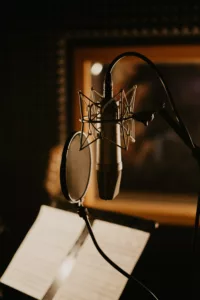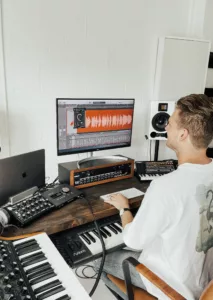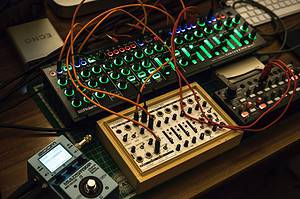Giving Musicians the Tools to Make Better Music
The Ultimate Showdown: Analog vs. Digital Audio Explained

Hey, you rockstars and audio wizards! Mattie here, bringing you another opinionated—but let’s be honest, you love it—deep dive into the world of sound. Today, we’re ripping off the Band-Aid on a topic hotter than a tube amp cranked to eleven: Analog vs. Digital Audio. Cue the dramatic music.
Now, I get it. This topic can be as divisive as pineapple on pizza or, you know, Instagram vs. reality. But here’s the deal. We’re going to get into the thick of it, and when we’re done, you’ll be armed with enough knowledge to sound super savvy at the next dinner party you attend. “Oh, you like vinyl, eh? Let’s talk analog warmth, shall we?” That’s you, two glasses of wine deep, dazzling everyone with your newfound audio expertise.
So, buckle up. Because by the time you’re done with this, you’ll be well-equipped to take a stance—or simply enjoy the nuance of the debate without throwing your drink at anyone. And hey, if this debate really ruffles your feathers, take a breather and check out my piece on Analog vs. Digital Synthesizers to see how these two worlds collide in more ways than you think.
For a bite-sized overview of this notorious rivalry, you can also pop on over to The Verge. They’ve got a killer article that hits some high notes but let me tell you, we’re about to go deep. Like, Mariana Trench deep.

The Basics: What Are We Even Talking About?
Alright, so before we dive into this boiling cauldron of audio debates, we’ve got to understand what the heck we’re even talking about. This isn’t some ‘Coke vs. Pepsi’ playground tiff; it’s more like the ‘Marvel vs. DC’ of the audio world. There’s a backstory, heroes and villains (depending on who you ask), and a ton of technical mumbo jumbo that usually just confuses the heck out of everyone.
Analog Audio, Meet World
Let’s talk analog. You know, the ol’ granddaddy of audio, the hipster of sound—born in an era when flared jeans and Woodstock were all the rage. Analog audio is continuous, like the smooth moves you try to pull off on the dance floor. It’s uncompressed and raw. It’s the full-bodied red wine to the digital’s white claw (yeah, I went there).
Analog signals are essentially a continuous representation of sound waves, captured through a medium like magnetic tape or vinyl. This makes them intricate and detailed, offering what many describe as a ‘warm’ and ‘natural’ sound. It’s the kind of sound that makes you want to close your eyes and float in it, like you would in a pool of melted chocolate. Okay, maybe not chocolate, but you get the point.
Digital Audio, The New Kid on the Block
Now, let’s talk about the millennial cousin—digital audio. While analog is busy sipping its Old Fashioned, digital is knocking back energy drinks and pumping out crisp, clean sound in ones and zeros. Yep, you read that right. In digital audio, sound is converted into a binary format, making it easier to store and transport. It’s like taking a complex Shakespearean play and converting it into a series of emojis.
Digital audio is what you’re probably most familiar with. It’s what streams through your Spotify playlist, pumps out of your Bluetooth speakers, and unfortunately, also what makes your least favorite song ever that much clearer. Convenience is the name of the game here, folks.
Now that you’ve met the players, are you picking sides yet? Don’t. I mean, not yet. We’ve got a long road ahead. And if you’re fascinated by how different types of equipment fare in this debate, don’t forget to check out my in-depth guide on Analog vs. Digital Mixers.
Oh, and if you’re still foggy on the basics, here’s an external source you may find useful: Sound On Sound offers an excellent explanation that breaks down digital audio in more technical terms for those interested.
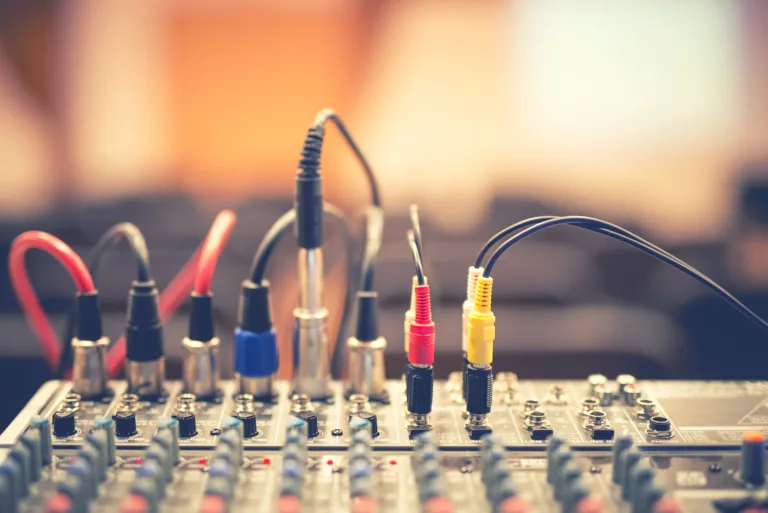
The Pros and Cons: A Tale of Two Audios
Welcome back to our sonic saga, my audio aficionados. If you thought we’d take it easy, think again. We’re diving headfirst into the nitty-gritty: the good, the bad, and the scratchy (when it comes to analog sometimes, at least).
The Renaissance Man: Analog Audio
The Good Stuff
First up, analog audio. Ah, the bearded hipster of sound. This guy’s got layers, okay? And by layers, I mean an unbelievable richness of sound that digital can’t quite replicate. Imagine stepping into an old, dusty bookstore and catching the scent of aged paper and leather. That’s how analog feels to your ears—a textured, complex experience that unfolds with every listen.
The Less Good Stuff
Alright, I can’t serenade analog without pointing out its blemishes. First, it’s high maintenance. Like, needs-its-own-room kind of high maintenance. The equipment takes up space, needs regular TLC, and did I mention it’s often expensive?
The Millennial Prodigy: Digital Audio
The Good Stuff
Let’s hop on to digital audio. Think of it as the Marie Kondo of audio: clean, organized, and minimalistic. Its clarity and accuracy are second to none, making it the go-to choice for everyday listening and even some professional applications.
The Less Good Stuff
But hey, let’s spill some tea. Digital audio can lack that emotional oomph. Plus, since it’s encoded into a limited set of values (binary, remember?), it sometimes loses the nuances and complexities that make audio…well, feel alive.
Now that you’re swimming in pros and cons, how about a palette cleanser? Take a look at my guide on Analog vs. Digital Recording to see how these qualities play out in real-world recording scenarios.
While we’re at it, I’m throwing in a recommendation to this absolutely delightful read on BBC’s website, where they delve into the audiophile’s love affair with analog sound.
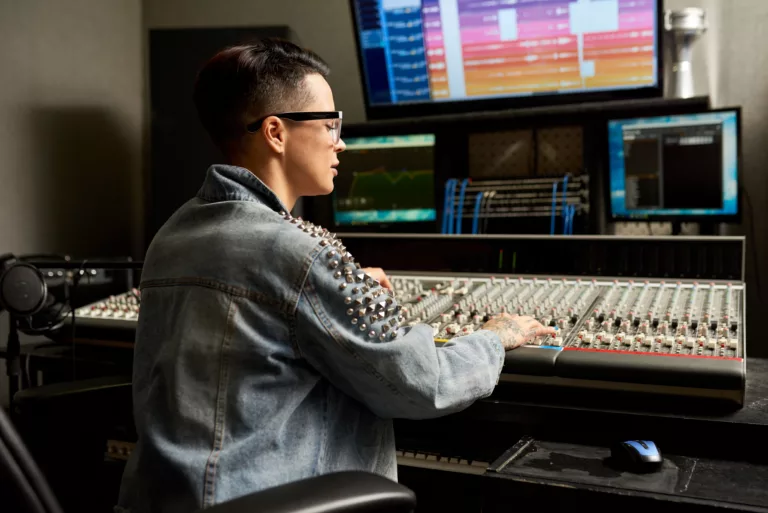
The Real-World Applications: Who Cares?
So here’s where the rubber meets the road—or should I say, where the stylus meets the vinyl. (Sorry, couldn’t resist.) We’ve talked theories, philosophies, and opinions till the cows came home. But what does all this mean in the real world? Who’s using what, and why should you give a flying fader?
Recording Studios: When Analog is King
Let’s start with recording studios, the cathedrals of sound, if you will. Think of your favorite classic album. Got it? Good. Now, there’s a fat chance that album was recorded using analog equipment. Why? Because analog offers a sonic richness that digital can’t quite replicate. It’s like the difference between baking bread at home and buying a loaf from the supermarket. Both are bread, sure, but one’s got that extra ‘something’—that handcrafted touch that makes you go “Mmmm.”
But hey, I get it, not all of us have the time or money to book Abbey Road Studios for a recording sesh. So if you’re more of a bedroom producer, have a read through my piece on Analog vs. Digital Recording. It might just make you reconsider your DAW choices.
Everyday Listening: Digital for the Win
Now, let’s say you’re not in a studio, dropping beats or shredding solos. You’re just a mere mortal, jamming out to your Spotify playlist while washing the dishes. In this scenario, digital has got you covered. It’s convenient, it’s everywhere, and it’s the reason you can carry thousands of songs in your pocket. Just try fitting a vinyl collection in there; I dare you.
Live Shows: A Mixed Bag
Ah, live shows. The sweat, the screams, the inexplicable feeling of unity when everyone’s vibing to the same tune. Here, it’s not so much about choosing sides as it is about creating an experience. You’ll often find a blend of both analog and digital gear, each serving its specific purpose. The mixer might be digital for its flexibility, but the guitar pedals could be analog for their distinctive tone. And yes, if you’re curious about those pedals, do visit my deep dive into Analog vs. Digital Pedals.
Still with me? If you want to go down the rabbit hole further, check out this article from Wired, where they explore how modern live shows are a mishmash of the old and the new.
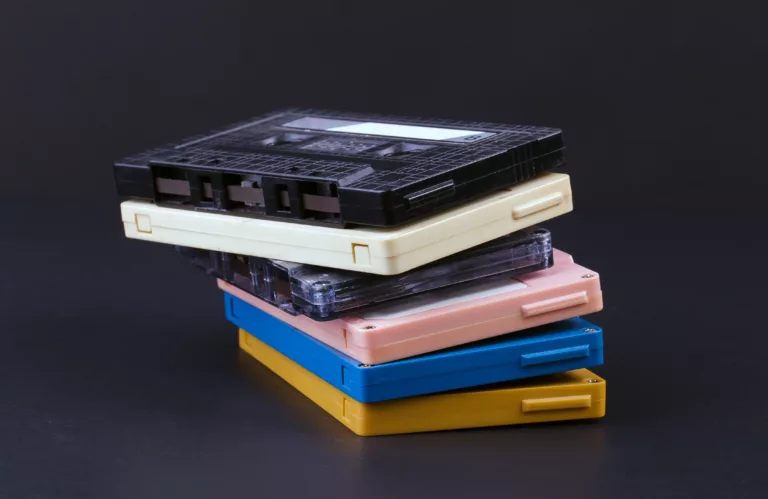
The Middle Ground: Can We All Just Get Along?
Alright, my peeps. Take a breather. Put down your pitchforks and extinguish your torches. We’re heading into the peace zone now—a realm where analog purists and digital die-hards can coexist without passive-aggressive side-eye. Welcome to the middle ground.
Hybrid Setups: Getting the Best of Both Worlds
Yeah, I know. It sounds like cheating, doesn’t it? Like eating your cake and having it too. But hear me out: hybrid setups are the Avengers of the audio world. You assemble the best heroes from both analog and digital universes, and voila! World domination—or at least, eardrum domination.
In a hybrid system, you might use an analog mixer for its tactile controls and warmer sound but employ a digital audio workstation (DAW) for its editing capabilities and plugins. Or perhaps you’ve got a collection of vintage analog synths that you adore but also enjoy the convenience of digital drum loops. Why pick a side when you can have both?
For those of you who are digging this middle-ground mojo, feel free to jump into my comprehensive guide on Analog vs. Digital Mixers. Spoiler alert: You can combine them, and it’s glorious.
Software That Mimics Analog: Is It Good Enough?
Now let’s talk digital software that masquerades as analog. Is it the Clark Kent of audio, or just a wolf in sheep’s clothing? Programs and plugins like Waves’ Abbey Road Studios plugins, for instance, have made a pretty solid attempt at capturing that analog essence. They give you a taste, a smidgen, a mere morsel of what it’s like to work with analog gear.
However, purists argue that it’s like comparing a photo of a rose to holding one in your hand. Sure, the photo can be stunning, even almost-real, but it’s missing the scent, the texture—the living essence of the flower. That said, if you’re not sniffing roses all day (aka not a professional), these emulations can be damn good.
Intrigued? Check out my post where I pit Analog vs. Digital Synthesizers against each other, including some software synths that aim to mimic their analog ancestors.
If you’re really geeking out about this, here’s a bit of nerdy delight for you—an article from MusicTech that delves deep into the world of analog emulation software.
Look, the truth is, we’re in an era where boundaries are getting blurrier by the day. Analog and digital are not blood enemies; they’re more like distant relatives who’ve finally found a way to get along at family reunions. So why limit yourself? Dive into both, mix and match, and find what tickles your fancy (and your eardrums).
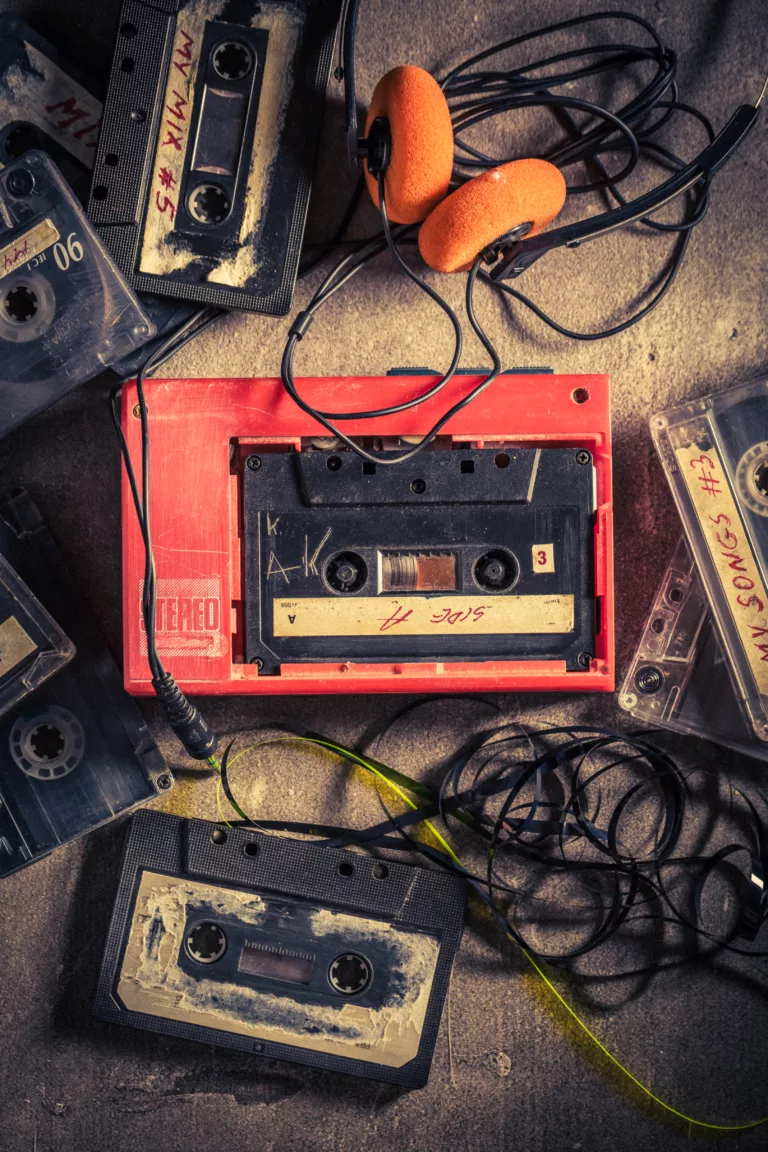
The Psychology: Why We Can’t Agree
Okay, take a seat and grab some popcorn. We’re about to dip our toes into the tumultuous waters of human psychology. Why can’t we just all get along? Why does a casual conversation about analog vs. digital often end up feeling like a presidential debate? Well, let’s break it down, shall we?
Emotional Attachment to Analog
Ah, nostalgia, that tricky minx. There’s something about the tactile feel of dropping a needle onto a vinyl record, or the chunky buttons and knobs on an old-school synth, that tugs at the heartstrings. It’s a sensory experience, folks. And let’s be honest, memories soaked in emotion are hard to beat.
The analog purists? They aren’t just defending a technology; they’re guarding an experience, a set of memories, an entire worldview. So don’t blame them for getting teary-eyed about it. To know more about how nostalgia plays its cards in the audio world, you might want to take a stroll through my thoughts on Signal Quality Compared: Analog vs. Digital.
The ‘New and Shiny’ Allure of Digital
On the other side of the fence, we have the tech-savvy, the future-forward, the lovers of all things ‘new and shiny.’ To them, digital isn’t just another option; it’s an evolution. It’s like going from a horse-drawn carriage to a Tesla. Why look back when you can zoom into the future, am I right?
But it’s not just about the bling or the bragging rights. It’s about accessibility. Digital technology has democratized music production and listening in ways we couldn’t have imagined a few decades ago.
The Stubbornness of Generations
Finally, let’s talk generational standoffs. Older folks may swear by the authenticity of analog, while the younger gen may roll their eyes and flaunt their ultra-modern digital setups. Neither wants to yield, and so we have the eternal tug-of-war between Team Analog and Team Digital. It’s like Thanksgiving dinner but without the turkey.
Intrigued by the generational clashes? I’ve got something to tickle your neurons—a juicy read from The Guardian that explores the debate from various perspectives.
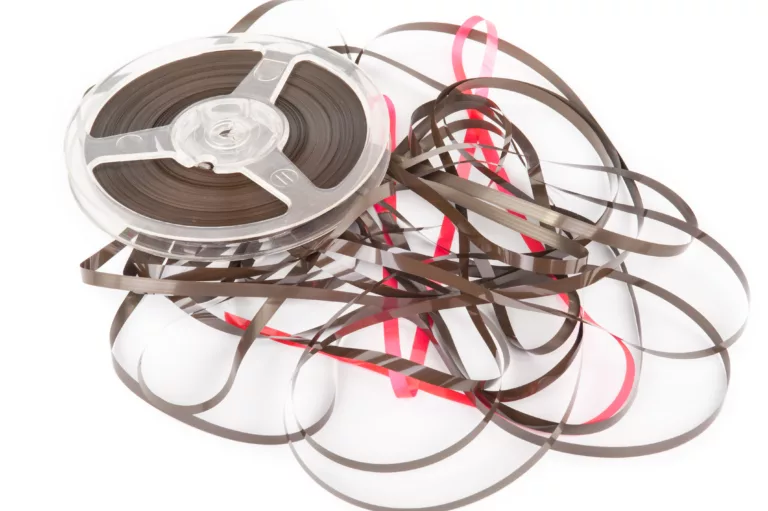
The Verdict: Is There Even One?
If you’re here for a final, definitive, end-all-be-all verdict, well, you might as well keep scrolling through your Netflix library for the meaning of life. Because spoiler alert: there’s no one-size-fits-all answer. But don’t go running for the hills just yet; let’s break this down.
Your Stance: Why Choosing a Side May Not Even Be Necessary
Look, we’ve navigated the murky waters of the analog vs. digital debate like seasoned sailors. We’ve explored the nooks and crannies, and guess what? It’s not about picking a side. It’s like asking someone to choose between air and water; you kinda need both to survive—or at least, thrive—in the audio world.
In some of my previous articles, I’ve gone into specific cases where one might shine over the other. If you’re a recording artist, for instance, you may find that certain analog elements capture the soul of your music in ways that digital can’t. On the flip side, if you’re into EDM or any genre that requires a lot of sound manipulation, digital platforms offer an unparalleled playground. Curious? Dive into my comparison of Analog vs. Digital Amplifiers for more insights.
The Golden Rule: Context is King
Ah yes, the golden rule, the ace up your sleeve, the pièce de résistance—context. It’s not just what you’re using; it’s how you’re using it. Are you a DJ dropping beats at a neon-lit club, or are you recording acoustic sets in a wood-paneled room? Depending on the scenario, either analog or digital—or a sprinkle of both—could be your go-to.
The importance of context can’t be overstated. I can go on and on about the advantages and drawbacks of each, but at the end of the day, what matters is how you plan to use them in your specific context. For those who want to understand the importance of context, check out this fantastic piece by Sound On Sound that puts it all into perspective.
“Context is King!” – Mattie
Conclusion
Ah, we’ve arrived at the end of this audio odyssey. If you’ve been with me from the start, give yourself a pat on the back. You’ve waded through the tides of emotion, navigated the labyrinth of technology, and hopefully come out the other side enlightened or, at the very least, entertained.
Summary of Key Points
Quick recap for those with goldfish memory or for anyone who scrolled right down to the bottom (you know who you are):
- Analog has its roots deep in nostalgia and offers an unparalleled sensory experience.
- Digital is the brash new kid on the block, democratizing the audio world one byte at a time.
- It’s not about picking sides; it’s about knowing your context and making the tools work for you.
Final Witty Remarks
So the next time someone storms up to you, red-faced and ready for debate, demanding to know where you stand on the analog vs. digital audio divide, just smile and say, “Well, it’s complicated.” Then drop some of the knowledge bombs you’ve picked up here, and watch as their face goes from fiery to fascinated—or at least slightly less aggravated.
That’s it, folks! Remember, whether you’re Team Analog, Team Digital, or Team “Why Not Both?” the key is to keep listening, keep exploring, and most of all, keep enjoying the music.
Till our next sonic adventure, peace out!
Yours in perpetual audio curiosity, Mattie
Thanks for reading! If you still need help, check out my Free Vocal Presets for Logic Pro X that will get your vocals sounding amazing in no time!!
Mattie
Check Out Our Other Articles!
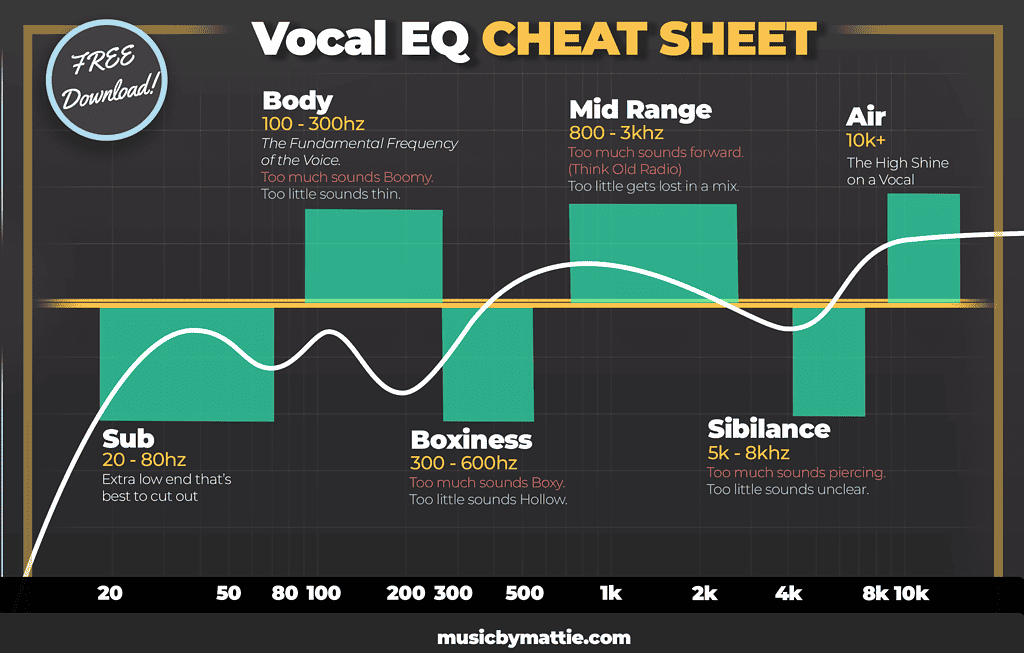
Download our FREE Vocal EQ Cheat Sheet!
Mattie
Post Info
Join "5 Beat Friday"
Every week you'll get 5 beats about the production world. Join the over 5,000+ other producers bettering themselves through 5 Beat Friday!

